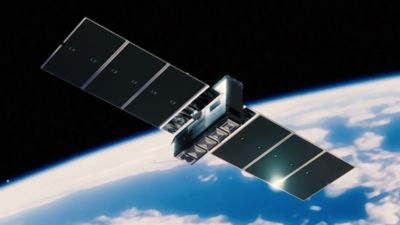Case Study
-
United States -
United Kingdom -
India -
France -
Deutschland -
Italia -
日本 -
대한민국 -
中国 -
台灣
-
Ansysは、シミュレーションエンジニアリングソフトウェアを学生に無償で提供することで、未来を拓く学生たちの助けとなることを目指しています。
-
Ansysは、シミュレーションエンジニアリングソフトウェアを学生に無償で提供することで、未来を拓く学生たちの助けとなることを目指しています。
-
Ansysは、シミュレーションエンジニアリングソフトウェアを学生に無償で提供することで、未来を拓く学生たちの助けとなることを目指しています。
"We choose Ansys HFSS software because it's the gold standard in simulation, and we are so happy about how far we have come using the tool. The support and mentoring that we have received from LEAP Australia has been absolutely amazing."
— Flavia Tata Nardini, CEO and Founder, Fleet Space Technologies
The nature of developing satellites for space is that everything must be done correctly to avoid failure. Once an antenna and payload are launched into space, it is too late to correct any engineering mistakes. That’s why there is so much investment in building resilience into the design—so they have the long-term durability needed to deliver a meaningful return on investment (ROI). Antennas are an important component of Fleet Space’s satellites, but as a startup, Fleet Space doesn’t have an infinite budget or development time.
Challenges
It is difficult — sometimes impossible — to create physical tests that perfectly mimic the environment in space. Fleet needed to ensure their 3D printed antennas were designed for the right performance and printed with the right geometries. Still, there’s no real way to know how they will behave once they enter space. Historically, to build and test a satellite, hundreds of people are needed. But because these antennas are so unique, Fleet had to build a specialized team with high-level capabilities in antenna design.

Fleet Space Centauri-4 is the world’s smallest voice-enabled satellite.
Engineering Solutions
Fleet used Ansys HFSS electromagnetic simulation software to design antennas for space and ground segments. The features and capabilities they found most useful involved HFSS software's ability to facilitate parametric optimization, which enabled Fleet to systematically vary design parameters for optimal performance. This is crucial for refining antenna designs to meet specific requirements. Depending on the complexity of the antenna designs, having access to various solvers in HFSS software, such as the finite element method (FEM) or FEM-method of moments (FEM-MoM) solvers, provided flexibility in analyzing different aspects of the antennas. Accurate meshing is paramount for simulation precision, and HFSS software offers robust meshing tools that permit control over mesh density to optimize simulation efficiency.
Fleet also used Ansys Mechanical finite element analysis software for static, modal, and random vibration analysis on almost all their projects, including satellites, geodes, and more. Mechanical software’s steady-state and transient thermal analyses were used for lunar environmental scenarios. Fleet also used APDL scripts for dynamic loads and initial conditions.
Benefits
A range of technical insights can be obtained to enhance performance in antenna design using HFSS software. It enables detailed analysis of radiation patterns, S-parameter behavior, and frequency response, which are all crucial for optimizing antennas in space and ground segments. Parametric optimization enables the systematic adjustment of design parameters, aiding in fine-tuning for optimal results. Near-field and far-field analysis, efficiency and bandwidth assessments, coupling and isolation studies, and consideration of material and temperature effects provided Fleet with a comprehensive understanding of antenna behavior.
Mechanical software gave Fleet confidence in all of their designs and a comparison point they could use to measure against real hardware tests. It aided in providing information on peak power consumption of electronics and helped with meeting requirements for passive and active heating in the structural design. Fleet was also able to obtain theoretical temperature thresholds before experimental testing was conducted.
Ansysができること
Ansysができること
お問い合わせ
お問い合わせいただき、ありがとうございます。
当社はお客様の質問にお答えし、お客様とお話できることを楽しみにしています。Ansysの営業担当が折り返しご連絡いたします。











